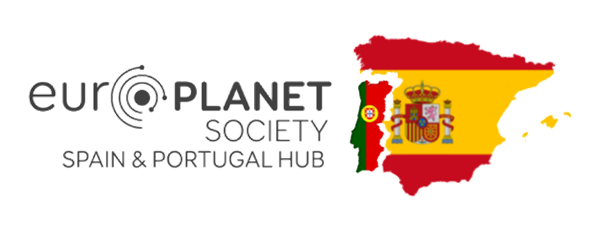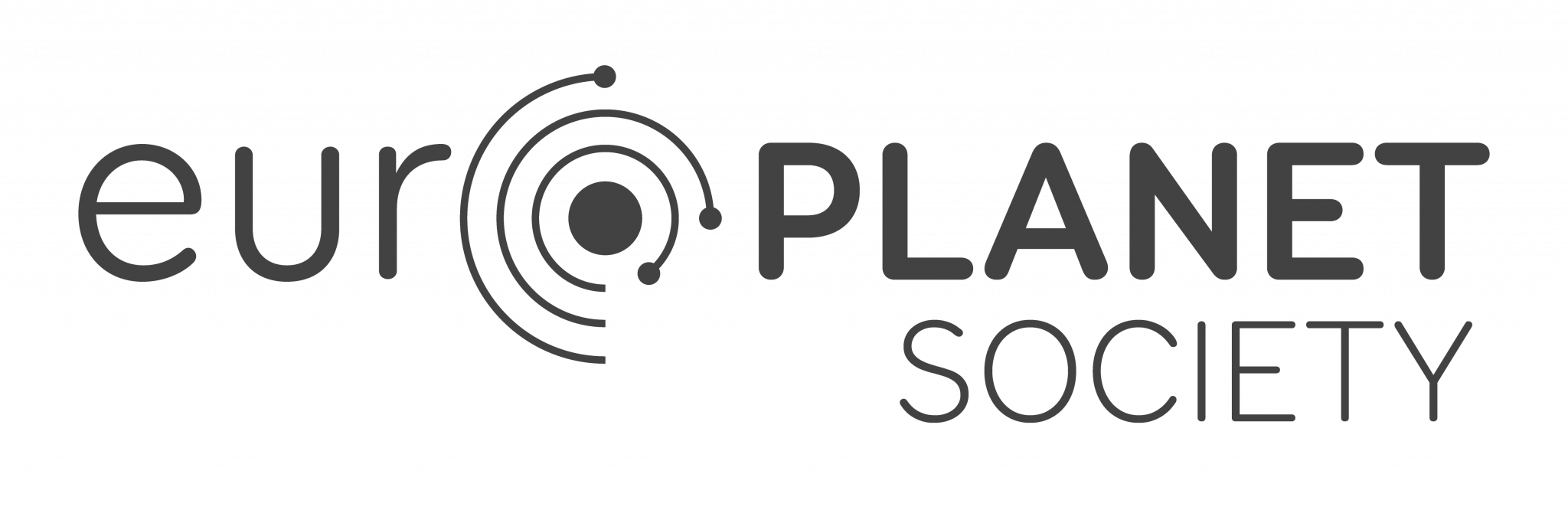Outreach
Activities
Amateur
Community
Networking
Hub Activities
Planetary Sciences
in Spain and Portugal
Industry
& Stakeholders
Join
Europlanet Society
Facilities
Ground Based Telescopes
Members
Europlanet Society
Space
Exploration
Scientific
Conferences
Tytle: 3 PhD positions in IA-Porto for exoplanets
Centre:Instituto de Astrofísica e Ciências do Espaço
Type: Predoctoral
Description:
The positions are offered in the context of the project "FIERCE: Finding Exoearths: tackling the challenges of stellar activity" funded by the European Research Council under an Advanced Grant with the reference 101052347. The work will be developed at CAUP (in the Porto node of the Instituto de Astrofísica e Ciências do Espaço), under the scientific supervision of Nuno C. Santos and/or other members of the scientific team of IA.
Fellowship duration: Each fellowship should start between the 1st of September and the 1st of October 2023, renewable on a yearly basis, and has a maximum duration of 48 months
Work plan: The detection and characterisation of other Earths, planets with the physical conditions to hold liquid water and thus potential life-sustaining environments, is a bold objective of present-day astrophysics. This goal continuously pushes the development of new ground- and space-based instrumentation. However, the quest for other Earths is severely limited by astrophysical “noise” from the host stars, whose signatures distort the spectra used to detect and characterize the planets.
The PhD projects, offered in the context of one Advanced Grant funded by the European Research Council, are related with the development of new methods and analysis tools to tackle the problem of stellar noise in exoplanet research. In particular we expect the successful candidates to contribute to the development and exploitation of data from the PoET solar telescope and ESPRESSO spectrograph (ESO) to:
1) develop new approaches to reach the 10 cm/s barrier in Doppler radial velocity measurements needed to find and characterize other Earths orbiting other Suns;
2) model and correct stellar noise in transmission spectroscopy used to study exoplanet atmospheres.
Exoplanet data obtained with the ESPRESSO and NIRPS (ESO) spectrographs may also be made available.
The projects will have a strong impact on the exploitation of data from future ground-based projects and space-based missions such as ANDES@ELT (ESO) and PLATO (ESA).
Tytle: Postdoctoral position on Uranus and Neptune atmospheric modeling
Center: Laboratoire de Météorologie Dynamique (LMD), Sorbonne Université, Paris, France
Type: Postdoctoral
Description:
The Laboratoire de Météorologie Dynamique (LMD), located on Sorbonne Université (Paris, France), invites applications for a postdoctoral position on Uranus and Neptune atmospheric modeling. The position is funded by the ANR (Agence Nationale pour la Recherche) grant “Simulations and Observations of Uranus and Neptune atmospheric Dynamics (SOUND)”. The SOUND project addresses fundamental questions regarding the atmospheric physics of Uranus and Neptune, in particular i) atmospheric circulation (waves, jets, ...), storm activity and the methane cycle using circulation models at the global scale or at the regional scale and ii) characterizing stratospheric winds and temperatures from observations. This first aspect is the main topic of the postdoctoral position.
We are looking for a someone to contribute to the development of the Uranus and Neptune version of our Generic Planetary Circulation Model (PCM), a 3D versatile model developed at LMD in strong collaboration with other laboratories (LAB, LESIA...). The ice giant version of the PCM, based on our Saturn and Jupiter models [Spiga et al., 2020, Guerlet et al., 2020] is already operational but needs further developments. Depending on the candidate’s background and interests, several areas can be explored: add methane clouds and haze microphysics ; test a gravity wave parametrization and study its impact on stratospheric thermal structure and dynamics ; or account for convective plumes and study their impact on the general circulation. The candidate will rely on existing modules available within our team or collaborations (eg. adapting the Titan cloud and haze microphysics to Uranus; or the Mars and Saturn gravity wave parametrization to Neptune; etc.). Access to several hundred thousands of computing hours on a national facility has already been secured. The candidate can also count on in-house developed tools to analyze the GCM outputs, for instance related to spectral decomposition of wave modes, or the study of wave-mean zonal flow interactions. Comparisons with observations (including recent ones by the JWST, or with ALMA) will be done to validate and interpret the model results.
The applicant will join the “Planeto” team at LMD, composed of six permanent researchers and a dozen of engineers, postdocs and PhDs working on all solar system atmospheres and exoplanet ones, both on modeling and observational aspects. Within the SOUND project, the candidate will also collaborate closely with teams at the Laboratoire d’Astrophysique de Bordeaux and the LESIA at the Observatory of Paris. Diversity, work ethics and good work/personal life balance are important values shared by our collaborators. There are possibilities to practice sport for free or take French classes on the university campus. You are enthusiastic, curious, you work with rigor, and, while you are autonomous, you are also a team player with good interpersonal communication skills: join our team!
Applicants should have a PhD in planetary science, atmospheric physics or astrophysics. Experience conducting research on (giant) planet atmospheres ; atmospheric modeling ; good programming skills (eg. fortran, python, ...); experience with collaborative tools (Git / svn) and good English level are among the desirable assets for the position.
The postdoctoral position is awarded for 18 months (plus a potential 6 month extension), starting ideally in spring 2023 (the 1st of April, May or June), with some flexibility. Applications received until 31 January, 2023 will receive full consideration. Applicants should send a CV (including publication list), a cover letter stating their research accomplishments, interests in the project and date of availability, and 1 to 3 contact information for references to This email address is being protected from spambots. You need JavaScript enabled to view it..
Title: INPHINIT PHD FELLOWSHIP: Computer science applied to the minor bodies in the solar system
Center: Instituto de Astrofísica de Andalucía
Type: Predoctoral
Description:
The doctoral fellowship programme INPhINIT ”la Caixa” is devoted to attracting talented Early-Stage Researchers of any nationality to pursue their PhD studies in the best Spanish and Portuguese research centres and units with excellence distinction.
Research Project / Research Group Description
Historically the study of the physical properties of minor bodies in our solar system was done doing planned ground-based and space observations.Telescopes likes Hubble, Spitzer, Wise or Herschel were used. Then, most recently, large ground-based and space-based stars and/or galaxies surveys were planned with diverse objectives but were used by the minor bodies community to study the background minor bodies. That means, the telescope was pointing to a field of view to study some galaxy, star cluster or specific star and diverse minor bodies can be identified and studied in that pointing. The first large data release of minor bodies published using this technique was the Sloan Digital Sky Survey (SDSS) Moving Object Catalog. The catalog lists astrometric and photometric data for moving objects observed during the Survey. The advantage of these kind of data is that there are ready to use in the databases where the survey’s team applied the pipeline to extract the data from the observations. Other current examples of this kind of catalogues are: Wise, K2, Tess, Gaia and in a near future the LSST. Another huge source of data are the ground-based observations, where again, are planned with diverse objectives and a minor body can be found in the background. We want to extract the information on these minor bodies that appears on the images that were not planned to observe these bodies. We will use all the databases of minor bodie´s observations from the last 20 years, together with the observations made by our group, and extract as much information as possible. The challenge in analyzing the data lies in the heterogeneity of the data, the different observing conditions, formats, and timing of the data. The project aims to use data analysis tools to interpret the physical properties of these minor bodies observed in such different conditions and times. The developed tools can be used in the analysis of other databases in the future.





